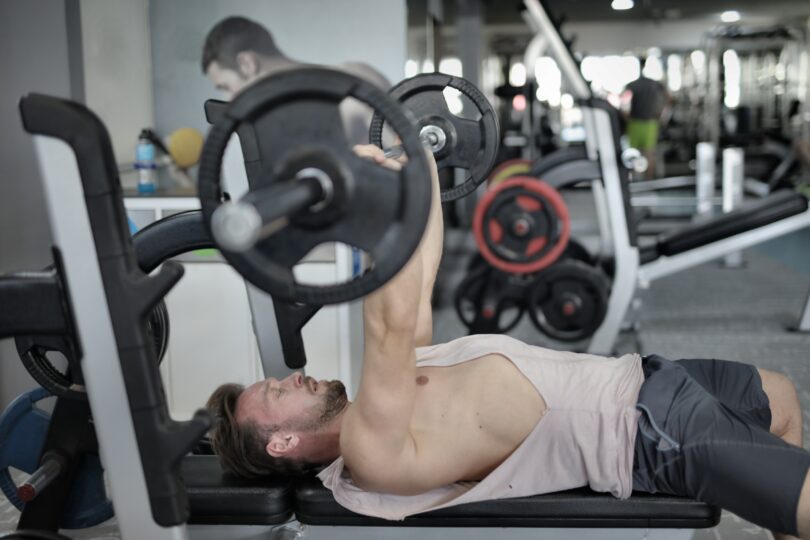Working out with weights is a great way to hit your health goals. But you need to take care not to hurt yourself.
Warm up before each session
You want to be warming up your whole body with movements that use all your limbs, not just holding a pose in one position. A good warm-up should also raise your heart rate to the point of feeling slightly breathless and make you feel a bit sweaty as your body temperature rises.
Choose suitable weights
If you want to get stronger: lift heavier weights for low repetitions (i.e. three sets of up to five repetitions, with 45-60 seconds of recovery between sets).
If you want to grow muscle: lift slightly lighter weights for more repetitions (i.e. three to four sets of eight to 12 repetitions, with a maximum of 30 seconds rest between each set).
Do be aware that if you choose weights that are too heavy for your goal and try to ‘soldier’ through, your form will be compromised, and you’ll run the risk of injuring yourself.
A challenging weight is a weight where you can complete the exercise correctly for the prescribed number of repetitions, but you can’t manage many more reps.
Get the technique right
If you choose weights that are so heavy that you can’t complete that exercise correctly, your body will need to compensate by using other muscles and joints that aren’t meant to be used to complete that movement. Unfortunately, over time, this compensation will result in unnecessary wear and tear on those muscles and joints, leading to injury.
Don’t be shy about using mirrors
Mirrors enable you to see what you’re doing while you’re doing it. Without this option, you run the risk of exercising incorrectly and injuring yourself.
The critical thing to watch out for in the mirror is alignment. Ensure your limbs follow straight lines when you perform an exercise.
When your joints and limbs are misaligned under resistance, you risk injury. Uneven pressure on the joint leads to strain, which can lead to damage. So, by using the mirror and ensuring your arms and legs are lined up (depending on the movement), you can feel confident that you’re exercising safely.
Pay attention to existing aches and pains
Before starting a new workout programme, be aware of your body’s condition. Ignoring a slight ache or pain could result in a small problem becoming a big one. So, for example, if your right knee hurts a little when you walk, see a physio or osteopath before you start lifting heavy weights.
And drink lots of water
We can move and go about our daily activities because of our joints. Joints are composed of bone, ligaments and cushioning tissue called cartilage. By keeping yourself regularly hydrated, you’ll keep your cartilage in good nick by keeping it soft and supple. By being kind to your cartilage through consistent hydration, you’re enabling exercise over the long term.









Leave a Comment
You must be logged in to post a comment.